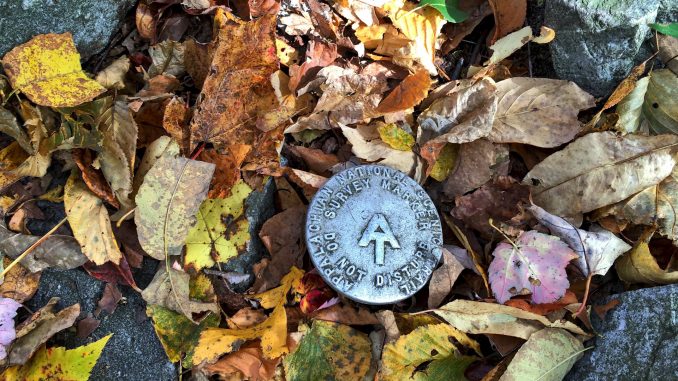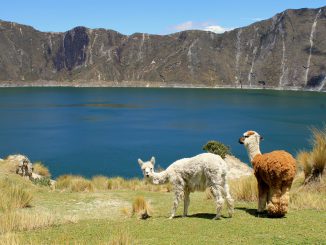
As days of walking slowly turn into weeks, and weeks then slowly turn into months, hiking the Appalachian Trail turns from an outdoors experience, to a grueling, yet self-imposed, slow motion wilderness adventure. As spring becomes summer, and summer slowly turns into fall, all this time is spent hiking, sometimes quite slowly, with a heavy pack, blistered feet, and empty stomach. Hiking the Appalachian Trail is not for the faint of heart, and it’s not for the novice hiker taking to the trails for the first time after months spent resting on the couch.
Following the ridge line of the Appalachian Mountains, the trail passes through eight national forests and two national parks. Traversing some of the tallest peaks on the east coast of the United States through nearly uninterrupted wilderness, the trail is one of the longest continuously marked trails in the world. Over the 2,189 miles of trail there are an estimated 165,000 white blazes marking the path. There are two different types of true thru-hikers on the Appalachian Trail, affectionately known as NOBO and SOBO, it is the northbound (NOBO) hike however that’s most common. Timing the trip is extremely important since it is dangerous and potentially life threatening to hike in the winter and Baxter Park in Maine closes on October 15, marking the deadline for finishing the northbound hike. Because of weather conditions rapidly turning towards winter, there’s a chance that if the hike is not planned well it won’t be finished in time. Imagine the horror of walking more than 2,000 miles only to be turned away with just a few more to go. While hiking north limits the start date, starting the trail in Georgia provides the best weather for greatest part of journey.
Walking the comparatively short 75 miles from Georgia into the Carolinas signifies the first real milestone along a path that will take even the most experienced hiker several months to complete. While walking into the mountains of Maine not only signifies that the trail is nearing its end, but that you are coming to some of the steepest portions of the trail and that the hiking is going to get very slow (sometimes less than a mile an hour) and that it is still going to be days or weeks before the trail comes to an end. Each change in elevation and terrain makes the hike a little different and each state has something to offer.
The trail is currently protected along more than 99% of its course by federal or state ownership of the land or by right-of-way, and is maintained by a variety of organizations and volunteers. The Appalachian Trail Conservancy coordinates thousands of volunteers each year that spend more that 175,000 hours maintaining the trail and it is maintained by 31 trail clubs and multiple partnerships. The idea for the Appalachian Trail first came about in 1921 and the entire trail was completed by 1937.
The financial burden of hiking the Appalachian Trail is nothing to scoff at. It’s recommended that anyone hiking be prepared to spend a minimum of $1,000 a month while on the trail. Since it can often take between five and seven months the cost to walk in the wilderness can get quite high. This of course does not include paying the bills at home while away, or purchasing a plane ticket back to Bakersfield, or Seattle, or wherever you call home once you’re finished.
The Appalachian Trail is overall relatively safe and most of the injuries are mild. The most common are the sunburns and blisters familiar to any hiker, there are however more serious safety concerns like wild animals, insects, rugged terrain, weather, and bacteria that cannot be overlooked. Bears, snakes, and wild boars live along the trail and they may all pose a threat to human safety, but while the animals that can bite are an issue, it’s the little critters that aren’t always seen that can cause the most damage. The section of the trail running from the Mid-Atlantic to Maine has a high population of deer ticks that can potentially carry Lyme disease. This region of the United States in fact has the highest density of Lyme disease in the country.
From Springer Mountain in Georgia, with an elevation of 3,782 feet, through the Carolinas and their Great Smoky Mountains the scenery seems to slowly change without notice. Then the black bears and metal bear-proof bins on New Jersey give a feeling of suddenly being in another country before the sections of New York’s trails with the lowest elevation change turn to New Hampshire and the tallest peak along the trail, Mount Washington at 6,288 feet. The northern terminus of the Appalachian Trail is on Mount Katahdin’s Baxter Peak, and it’s here in Maine, that some of the most difficult hiking may mean covering only a few miles in a day.
Appalachian Trail Facts
- The trail is the longest running and most comprehensive volunteer conservation program in the world.
- The changes in elevation are equal to climbing Mt Everest 16 times.
- The trail crosses a road approximately every 4 miles.
- An estimated 99% of the trail is not part of the original trail.
- The Appalachian Trail starts at Springer Mountain in Georgia and finishes at Mount Katahdin in Maine.
- A thru-hike generally requires five to seven months.
- More than 2 million people each year hike at least part of the trail.
- Though the majority of the trail is in forest or wild lands, some portions cross through towns and over roads.
- The Appalachian Trail passes through 14 states: Georgia, North Carolina, Tennessee, Virginia, West Virginia, Maryland, Pennsylvania, New Jersey, New York, Connecticut, Massachusetts, Vermont, New Hampshire, and Maine.
- There are three trails that make up what’s known as the Triple Crown of Hiking in the United States. They are the Continental Divide Trail, the Pacific Crest Trail and the Appalachian Trail.
- According to the Appalachian Trail Conservancy only 10-15% of those that attempt to hike the entire trail actually complete it in a single season.
Each State by the Miles
- Georgia – 75 miles (121 km)
- North Carolina – 88 miles
- Tennessee – 71 miles (114 km)
- Virginia – 550.3 miles (885.6 km)
- West Virginia- 4 miles (6.4 km)
- Maryland – 41 miles (66 km)
- Pennsylvania – 229.6 miles (369.5 km)
- New Jersey – 72.2 miles (116.2 km)
- New York – 88.4 miles (142.3 km)
- Connecticut’s 52 miles (84 km)
- Massachusetts – 90 miles (140 km)
- Vermont – 150 miles (240 km)
- New Hampshire – 161 miles (259 km)
- Maine – 281 miles (452 km)

